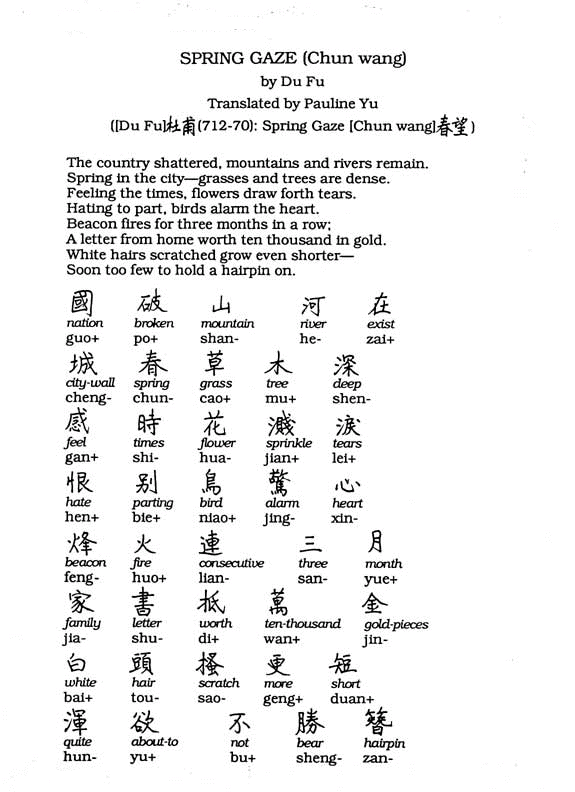|
In this presentation of “Spring Gaze” by Du Fu (712-770),
often considered China’s greatest poet, viewers can see the Chinese characters,
the romanization for each character, the English meaning of each character,
and a literary English translation of the poem.
Note: Chinese is a tonal
language, with two inflected tones and two level tones. The + and - signs
following the romanized Chinese words indicate inflected (+) and level
(-) tones. Tang poets followed elaborate rules governing the tonal patterns
of words in their poetry. For more on the four tones, see the AFE unit The
Chinese Language.
The background, forms, and content of Tang poetry are discussed in the
AFE video unit on Tang
Poetry. “Spring Gaze” is a “regulated verse,” a form developed
by the Tang poet Wang Wei (701-761). This form is discussed in detail
in the AFE video unit on Wang
Wei. |
